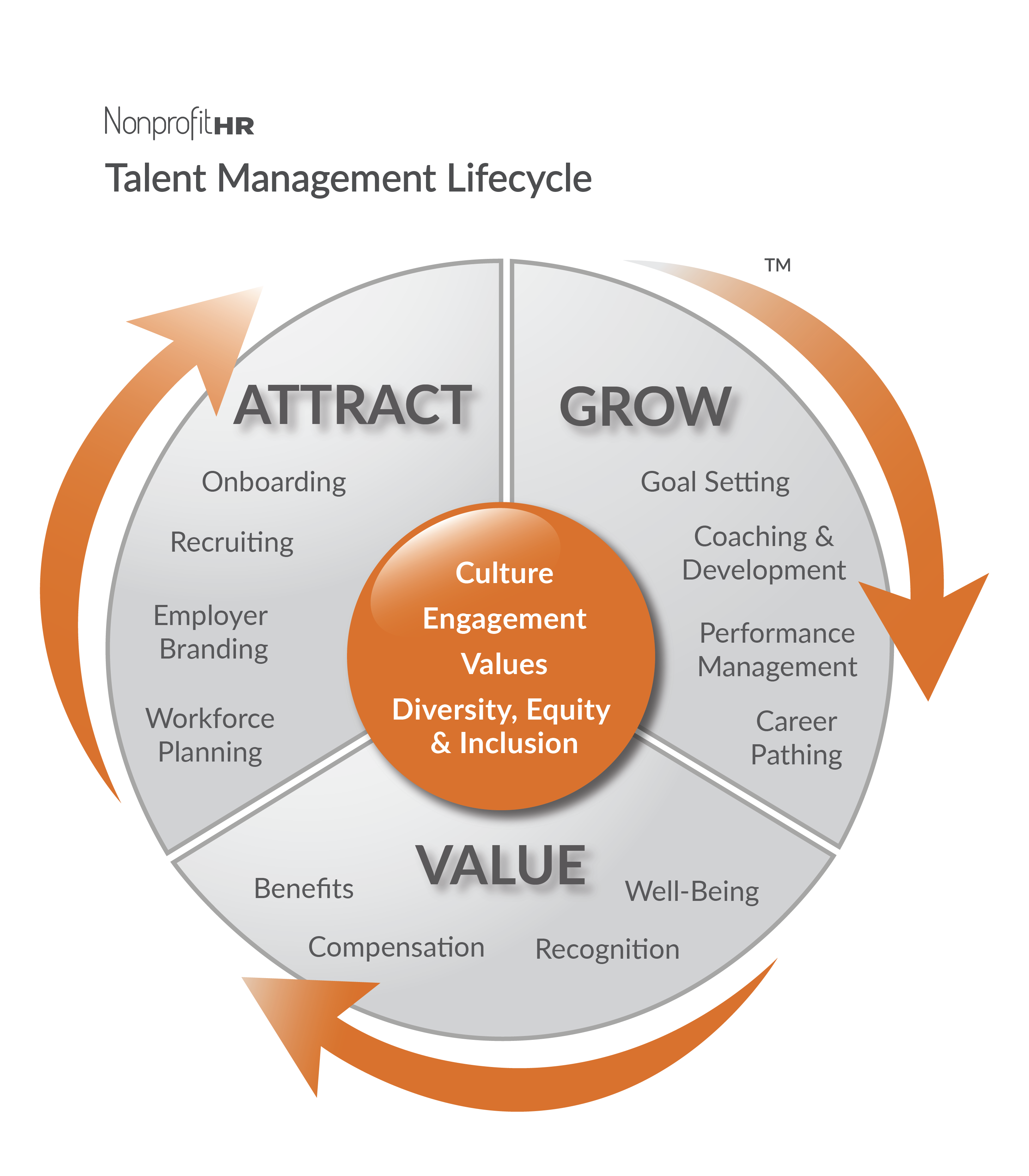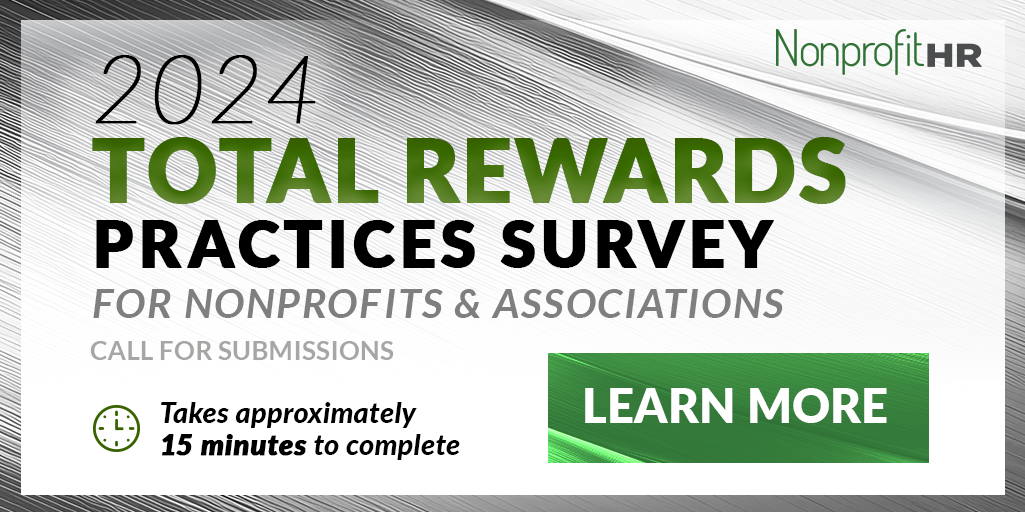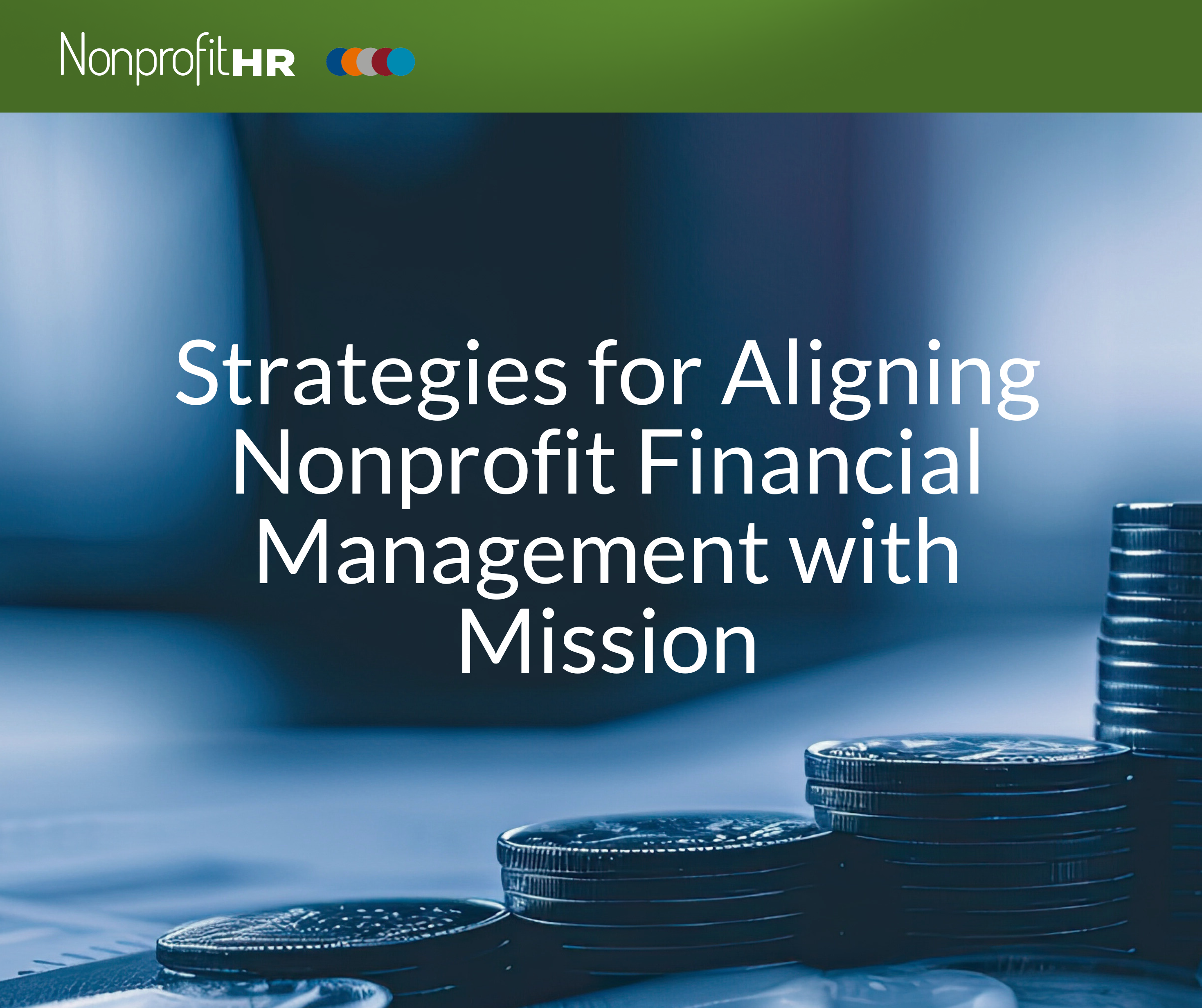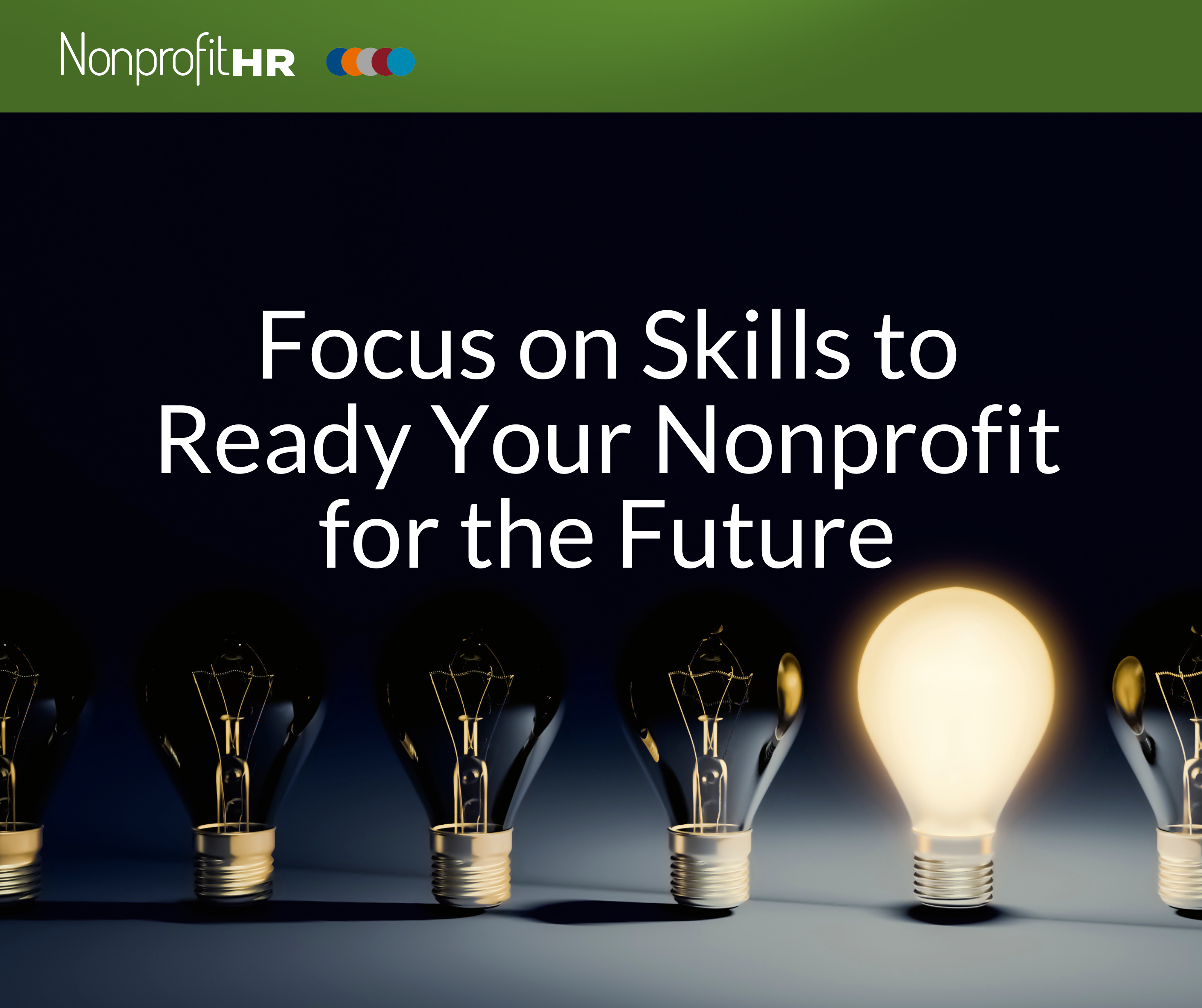WTOP: 5 ways nonprofits can…
Organizational culture is an exciting and intricate topic, and a key factor in realizing successful organizational learning and development (L&D). However, investigating the relationship between organizational culture and L&D is best done when there is an understanding of the external environment in which it operates—and the world today is one that can be described as volatile, uncertain, complex and ambiguous (VUCA). In this article, we will explore the interplay between organizational culture and L&D, how our VUCA world impacts it and how to build an organizational culture that promotes L&D grounded in equity.
What is Organizational Culture?
Serving the talent management needs of social impact organizations for over 20 years, Nonprofit HR defines organizational culture as:
The collection of values, expectations and practices that guide and inform the actions of all team members. These defined attributes work in collaboration with each other and provide a barometer of what your organization looks like, feels like and sounds like. When created with intentionality, a positive organizational culture produces performance results that further your mission and can increase your bottom line.
That said, culture is a central component to consider when creating any new organizational initiative, and L&D is no exception. This is why culture lives in the center of Nonprofit HR’s Talent Management Lifecycle.
What is Learning & Development?
L&D is a function within an organization that is meant to empower employees to grow and develop knowledge, skills and capabilities to drive impact. Some L&D initiatives include onboarding, new hire, career development, leadership development programs, skills training, talent strategy and more. These aspects of an L&D function provide the structure for a formalized approach to ensure that the organization and staff continue to learn, grow and move forward.
What is VUCA?
VUCA is an acronym that stands for volatile, uncertain, complex and ambiguous. For example, challenges within a VUCA environment can look like adapting to a hybrid model of work or keeping people connected during periods of immense change. Listed below are some characteristics of each element.
- Volatile: Volatile refers to a situation being understandable, but not predictable. Volatility is increased when the nature, speed, volume and magnitude of the change are great.
- Uncertain: Uncertain refers to the idea that an understanding of the impact exists, but information is not readily available and, again, there is little ability to predict the outcome.
- Complex: Complex refers to the idea that there are many interrelated parts in the situation that can have an impact on one another.
- Ambiguous: Ambiguous refers to the idea that there is no previous comparable experience, i.e. we don’t know what we don’t know. This may potentially create a hazy reality and mixed meanings.
How Does Our VUCA World Impact Organizational Culture?
The impacts of a VUCA world on organizational culture can be vast and varied, depending on the type, size, demographics and mission of your organization. And while navigating these impacts can initially seem like a great challenge, it also presents a great opportunity.
It is important to understand that the needs of your staff and the community your mission-driven organization serves will likely shift as external elements evolve. Once you are informed that a shift is occurring, how it is occurring and what the needs are, it is easier to respond, to try on a new perspective and to use these conditions as an opportunity to examine in-depth its unique impacts on your organizational culture. Use this knowledge to adapt new ways of thinking. As a leader, ask how you can build greater trust that would support the organization’s ability to respond to change. This can challenge a reliance on old ways of thinking that might not be working anymore.
Grounding Your L&D Culture in Equity and Inclusion
It is paramount to understand the importance of grounding your organizational culture in equity and inclusion. So what does this look like? Fostering an organizational culture that champions equity and inclusion is about operating with intentionality. It looks like creating intentional space, intentional language and dismantling policies and processes that define what equity, inclusion, belonging, justice and diversity look like for your organization.
How can L&D support an organizational commitment to equity? Ask, listen and act.
Building culture is about changing or reinforcing behavior. Before you build anything, seek to ask and listen. Consider conducting a culture survey in your organization to let staff identify where there are areas for growth, specifically around equity and inclusion. Then, use that feedback to collaboratively create opportunities to explore that growth in an authentic way.
Introducing a training without asking staff what they need might lead to those employees feeling unheard, making it unlikely they will develop motivation for true, lasting behavior change.
Another tangible way to demonstrate equity within the culture of your organization is to ensure equitable access to L&D for all staff members. This will look different for each level and for each organization, given there might also be constraints around the time and money you are able to invest, particularly in formal learning opportunities. But examine the things you can make available so that everyone has access to growth opportunities. For example, if you are seeking out training courses that tie traditional content and topics with specific callouts around equity and inclusion, for instance, making them available to all staff levels is a great way to bolster an organizational awareness on how they are linked and lay a foundation for equity.
As mentioned, training is only one tool of L&D. Throwing trainings at a broken culture is not going to fix it. Aim to incorporate trainings, whether internal or external, as one part of an overall approach and strategy in building a healthy organizational culture.
Build an Organizational Culture that Promotes Learning
Aggregate research on the direction of culture’s impact on organizational learning and knowledge management has identified four major aspects of organizational culture that stimulate L&D: individual development; change; interactions, cooperation and communication; and the environment.
Individual development: A culture that values the personal growth of the employees, individual learning and expertise is a culture that encourages learning. If an employee in an organization feels as though they don’t have autonomy and that their role isn’t stimulating their curiosity, this can hinder both individual and organizational growth. Employees seek employers that will value self-actualization and achievement.
Change: A culture of learning is one that has a positive attitude towards change. This means that change is viewed as something that is good, even desirable. When a challenge arises, rather than invoke worry, it incites creative and innovative action to generate new ideas and arrive at a solution. An organization with this perspective is one that understands nothing is eternal or untouchable, that reasonable risk is acceptable and mistakes are tolerated. It welcomes the reexamining of existing values, strategies, structures and routines. For example, the challenge that the COVID-19 pandemic presented welcomed new ways to think creatively and innovatively to create solutions and continue making impact. For example, Zoom, GoToWebinar and Microsoft Teams were able to enhance their programs to meet the new needs of the remote workforce.
Interaction, cooperation and communication: A culture that elevates learning contains values of honest, open and intense formal and informal interactions. This is a culture that allows for and provides open discussions between employees and between managers, which also welcomes cooperation. The participation of employees is also highly valued when it comes to decision making. A culture of learning is one that supports decentralization and a participative style of leadership, encouraging the personal growth and initiative of employees as well as ensuring their voice is heard.
Environment: A culture of learning is one that is constantly adapting to change; an organization that evolves in response to the environment to survive and continue creating value for the communities it serves.
Address Aspects that Create Barriers to Learning
A few things that may hinder your organization’s ability to create opportunities for growth could be initial pushback from staff, solely relying on self-driven tools and overlooking internal expertise. However, there are ways to effectively address each, should they occur within your organization.
- Pushback from staff: If your organization received initial resistance from staff, it is crucial to examine the reason for this resistance. For example, in organizations that feel stretched thin, change in the form of a new technological tool or approach might elicit pushback from employees because they don’t feel they have the bandwidth. Use this as an opportunity to be intentional about carving out time that gives staff permission to lean into new ways of thinking, doing and being. In this case, as mentioned previously, asking and listening will support learning in your organization. Conduct a survey or focus group to understand your employees’ schedules, availability and interests. Then, design a training or initiative in a way that aligns with that.
- Relying on self-driven tools: Online and virtual learning has certainly expanded what is available to offer staff, but relying solely on self-driven tools might not create a real impactful shift in organizational culture. In addition to trainings and other initiatives, creating time and spaces for connection, brainstorming and idea creation is also critical to building a culture of learning into the structure of the organization.
- Overlooking internal expertise: Learning does not always require tapping an outside resource. Have you considered surveying your internal knowledge base to see what expertise already exists within your organization? You may have staff who love to train and have new and/or relevant expertise that others in your organization could benefit from. As well, an outside expert may only be able to speak about a topic in a general sense, but an internal employee will offer more specific applications of those concepts within the context of your organization. Particularly if you are a smaller organization and trying to be creative with what to offer, hearing from someone within your peer group or organization can be deeply powerful.
In all of these scenarios, it is important to remember that shifting culture toward learning and seeing the impact of it takes time. Culture takes time to build and thus, it will take time to shift. It may result in some staff members who are ready to hear it and to lean into a new way of being. For others, it may take longer. In all cases, it takes intentional strategy and planning to ensure that what you’re offering to your staff is equitable, aligns with their learning needs and will create the most impact for the organization and the communities you serve.
Click here to view Part 2 in this series!
Contributing Authors
 | Alexandra (Alex) Taylor, MPA, brings over 20 years of nonprofit experience, focused on strengthening organizations around diversity, equity and inclusion; leadership development and staff training; nonprofit operations and talent management; philanthropy; strategic planning; and stakeholder engagement. Read full bio. |
 | Juliet Jason, MS, is a Senior Consultant for the firm’s Strategy & Advisory practice, partnering with clients to lead complex projects in various human resource disciplines. She provides strategic guidance, thought partnership, training and assessment to nonprofit clients in support of their missions. Read full bio. |
References
Argyris C, (1994), “Good communication that blocks learning”, Harvard Business Review.
Janićijević N. (1996), “Organizaciono učenje i karakteristike organizacije koja uči” [Organizational Learning and Learning Organization Characteristics], Poslovna politika.
Nevis E., DiBella A., Gould J. (1995), “Understanding organizations as learning systems”, Sloan Management Review, Winter.
Schein E. (1993), “How Can Organization Learn Faster”, Sloan Management Review, Winter.



































